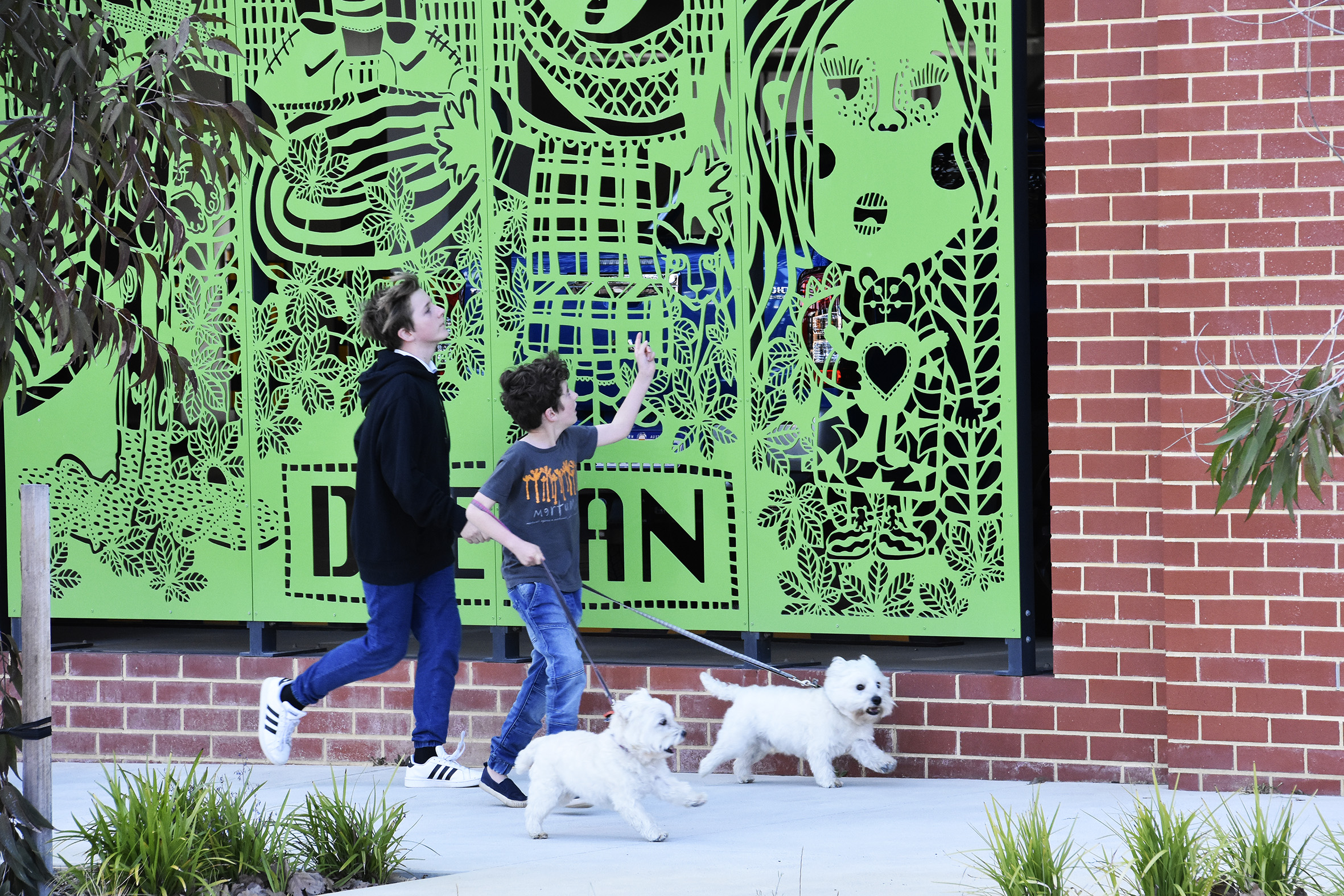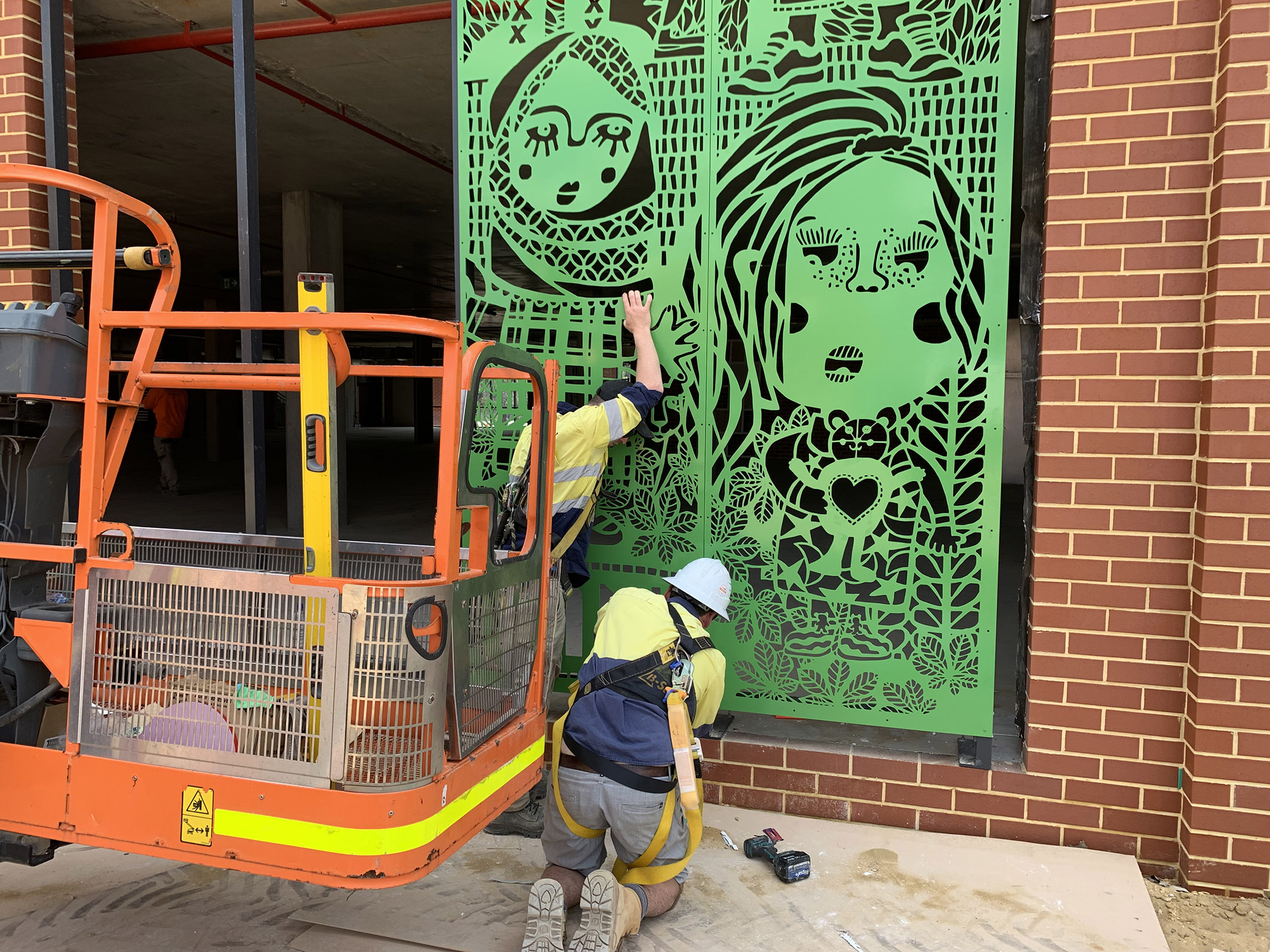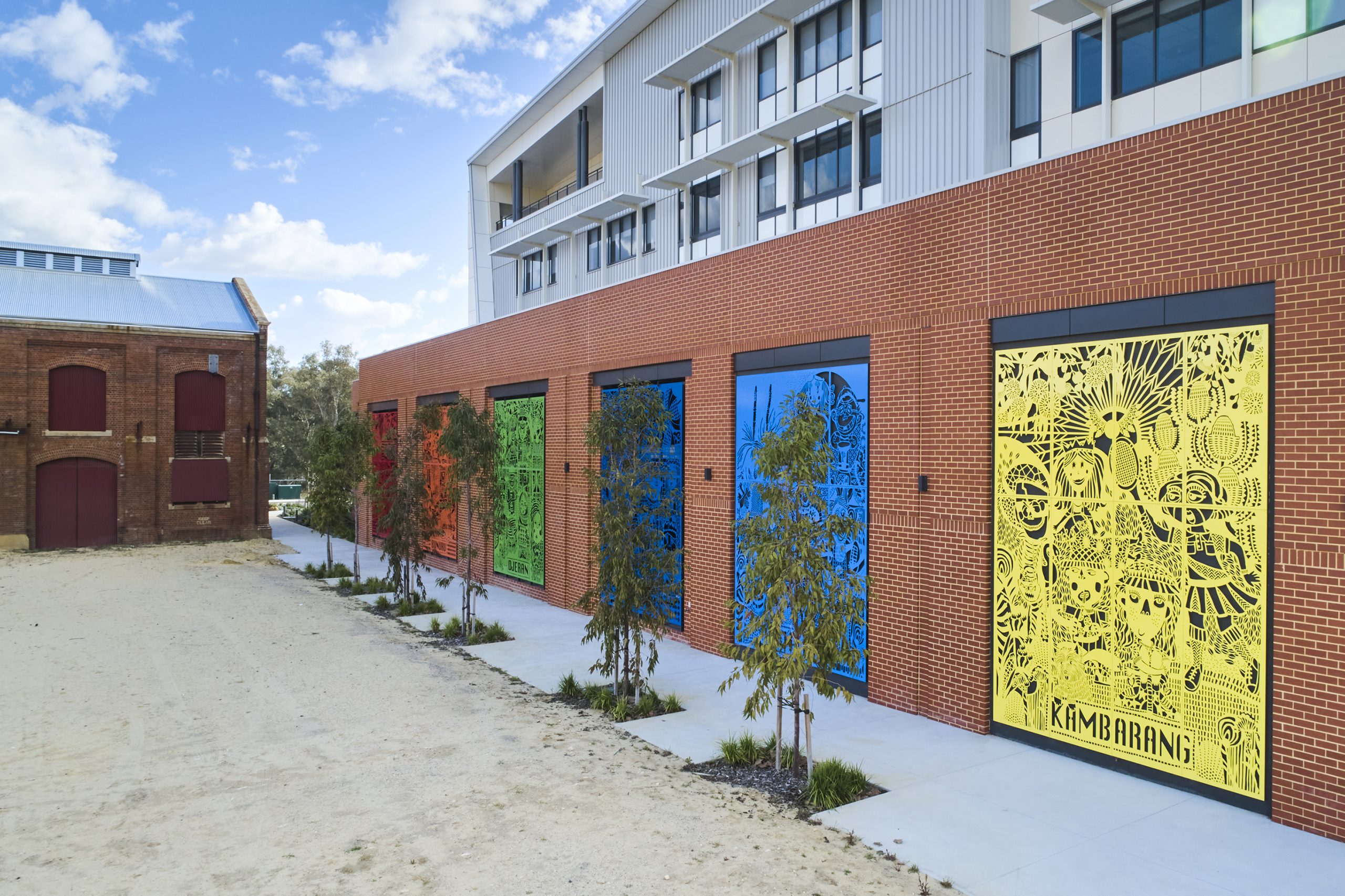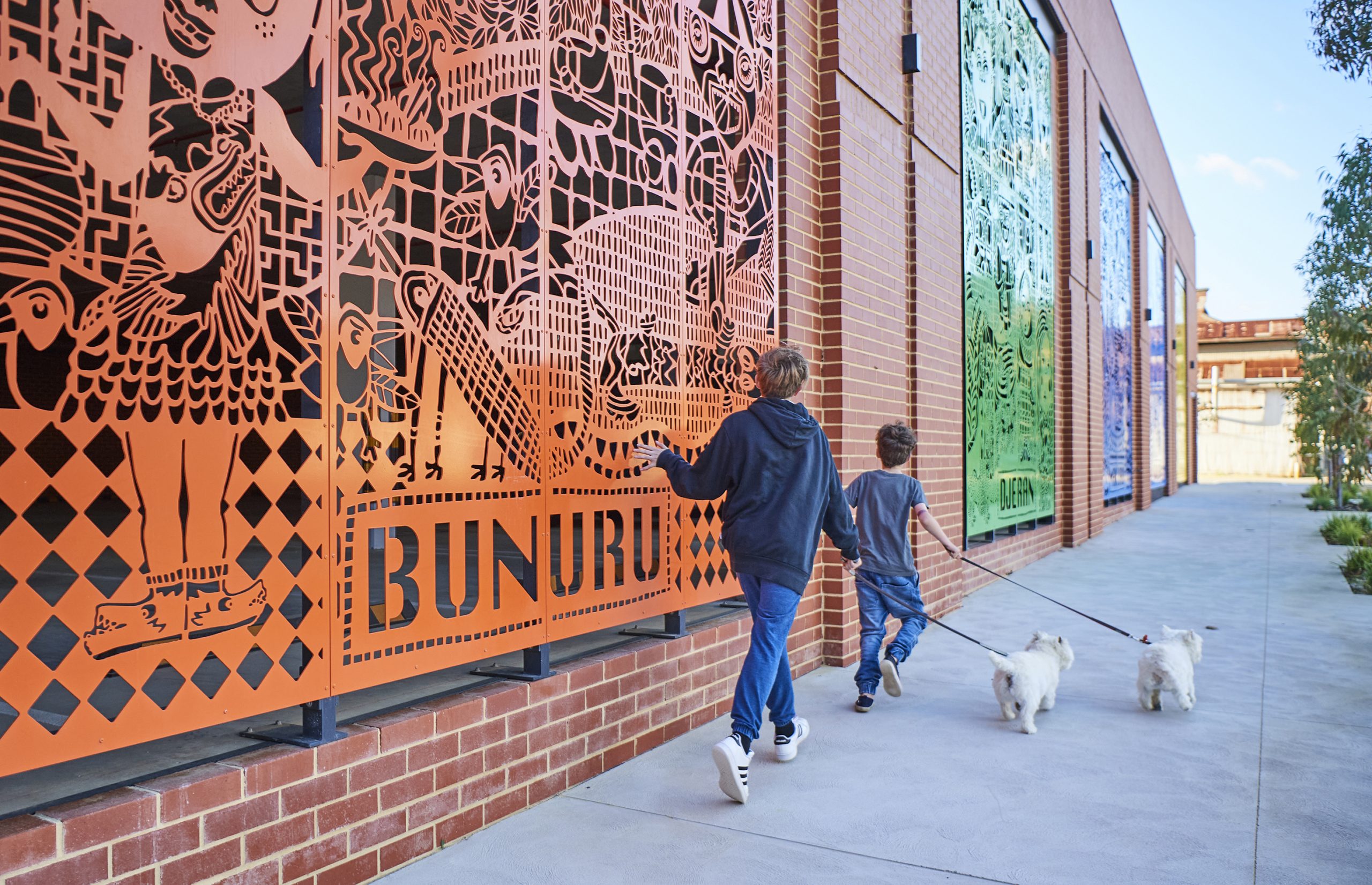





Client: Stan & Jean Perron Child Advocacy Centre
Location: Perth, Australia
Completion date: 2019
Artwork budget: $75,000
Project Team
Independent Visual Artist
Paula Hart
Independent Visual Artist
Public Arts Consultant
Helen Curtis
APPARATUS Public Art + Cultural Services
Client
Parkerville: Children & Youth Care
Architect
Peter Hunt Architects
Industry Resource
Graham Dawe
Kanyana Engineering Pty Ltd
Industry Resource
Interpon Australia
Industry Resource
Canning Vale Powder Coating
Indigenous Advisor
Karen Jacobs
Overview
Western Australian artist Paula Hart created Six Seasons for the Stan and Jean Perron Child Advocacy Centre, which houses multiple children’s services.
As a new building built within the Midland Railway yards the building design echoed the old buildings with 6 large openings, which perfectly suited a series of 6 large artwork screens. The screens are each 5600mm x 4400mm and comprised of 8 x 5mm aluminum laser cut panels, telling a reinterpreted story of the Noongah Six Seasons. The works are powder coated with Interpon D2525 to depict the colours of the seasons. The artwork screens are airflow for the multistory carpark and address all Australian Building Codes for airflow, wind load, pressure etc. The designs are unique in that they are highly pictorial and participatory, utilising children’s drawings. The artist is not indigenous, but sought to build the connections between young people’s lives, the natural environment and indigenous traditions.
Goals
In the south west of Australia, the Noongar seasonal calendar includes six different seasons in a yearly cycle. These are Birak, Bunuru, Djeran, Makuru, Djilba and Kambarang. Each of the six seasons represents and explains the seasonal changes we see annually. The different weather patterns, plants flowering and the behaviours of animals are indicators that the seasons are changing.
An awareness of the changes around us and the inherent beauty of observation is a critical skill and creates connections to our built and natural environment. So, what do local children today observe about how life around us changes with the seasons?
The artist asked children to think about what we wear, what we eat and how we play. Making the connection between the swooping magpies, the end of the footy season and athletics carnivals. As animals bunker down for the cold, so do we. The observation that “grandmas always buy us warm pyjamas and slippers at Easter instead of chocolate to get ready for the cold”. Some kids looked forward to Chinese New Year, while others couldn’t wait for the Royal Show.
Process
From these talks with children, Paula created a list of contemporary images that combined with a list of local native plants and animals. She guided the students at Highgate Primary, Matthew Gibney Catholic Primary and Parkerville through a step by step process. Instructing, drawing, stopping, listening, drawing again. The children tried some tricky tasks such as drawing themselves sitting cross-legged. Each class had a theme and kids drew what they related to most.
Then followed the long and thorough task of taking all these beautiful individual drawings and combining them into the six artworks. With a long history of working with children’s artwork, it is vitally important to Paula to keep the integrity of the original as close as possible, avoiding editing, censoring or neatening up.
Paula worked with the arts coordinator, architect, indigenous advisor and client, and oversaw the team of engineer, laser cutter, powder coater, installer and builder.
Additional Information
Community projects are interesting in the way they reflect a community. Each individual adds his or her own little piece of the story and you can never quite predict how the story will unfold. This project is not a true guide to the Noongah seasons, but rather an exciting and often hilarious vision of our human connection to the natural environment, as seen through the eyes of some very unique young Western Australians.